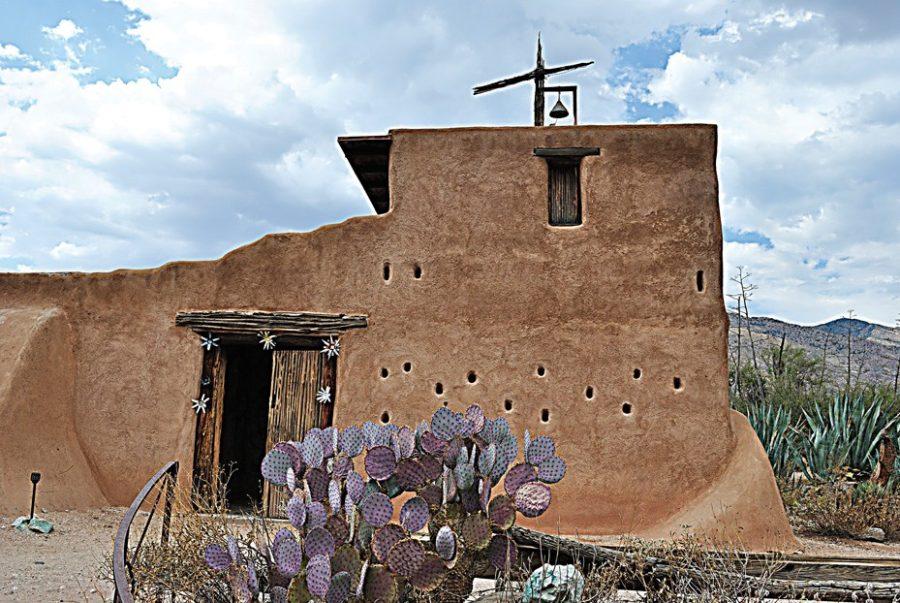Sitting on 10 acres of the majestic Tucson foothills is the DeGrazia Gallery in the Sun.
Designed and built by the late artist and winner of the UA’s coveted Alumni Achievement Award, Ettore “Ted” DeGrazia, the main gallery opened its doors in 1965. Now listed on the National Historic Registry, it became home to six permanent collections of DeGrazia’s artwork and some 15,000 rotating pieces. The sprawling main gallery and its magnificent courtyard would appeal to any art lover, nature enthusiast or student.
“The one thing I recommend to take in at the gallery is the main gallery itself,” said executive director Lance Laber. “The art is amazing and the building itself is just beautiful.”
The gallery is an elaborate maze of corridors and stunning adobe archways. For a limited time, the main gallery is currently displaying: “DeGrazia Watercolors: The Seri Indians-A Primitive People of Tiburon Island in the Gulf of California” and “Our Lady of Guadalupe.” Each collection shows DeGrazia’s incredible versatility, from realistic sculptures and abstract oil paintings, to jewelry and masks that reflect Southwestern culture.
In the middle of Gallery in the Sun is an eclectic outdoor haven featuring more of DeGrazia’s artwork, as well as a stone pond with a striking Native American themed sculpture in the center. In it are carved depictions of “Our Lady of Guadalupe,” wooden bridges flanked by native desert plants and animal skulls hanging from wooden beams.
Outside of the main gallery, a hand-painted sign and stone walkway lead to the Mission in the Sun. According to the gallery website this small chapel was, “built in honor of Padre Kino and dedicated to the Virgin of Guadalupe, whose image DeGrazia painted onto the adobe altar.” The altar has become a shrine, which is graced with personal mementos and candles left by visitors. With an open air roof and a stick cross rising toward the sky, Mission in the Sun adds an air of mystery and reverence to the DeGrazia property.
Up the hill from Mission in the Sun sits DeGrazia’s gravesite with a simple cross and stones surrounding. After his death in 1982, Laber said the DeGrazia family contacted him about managing the gallery, grounds and DeGrazia’s private residence, which is also located on the property.
“I agreed and got involved in 1982,” Laber said. “I just felt that the Gallery in the Sun was so special. Tucson and the rest of the world needed this place to remain as beautiful and vibrant as when the founders always kept it.”









